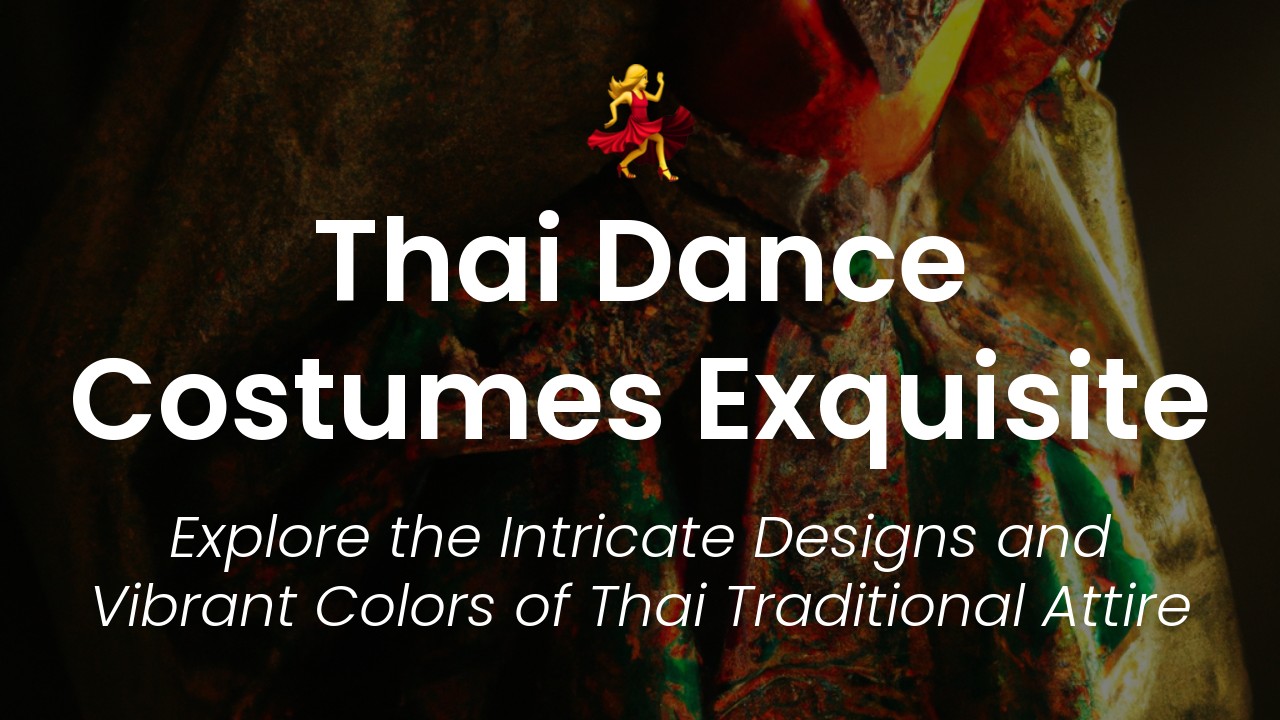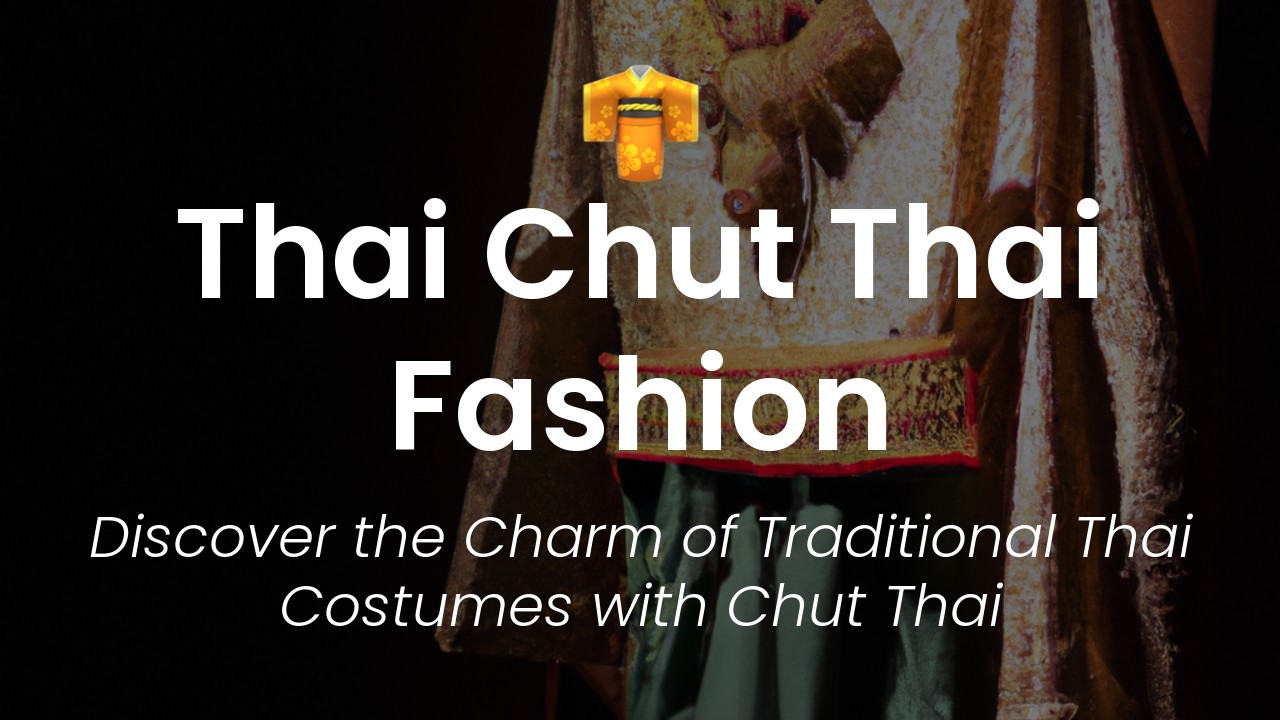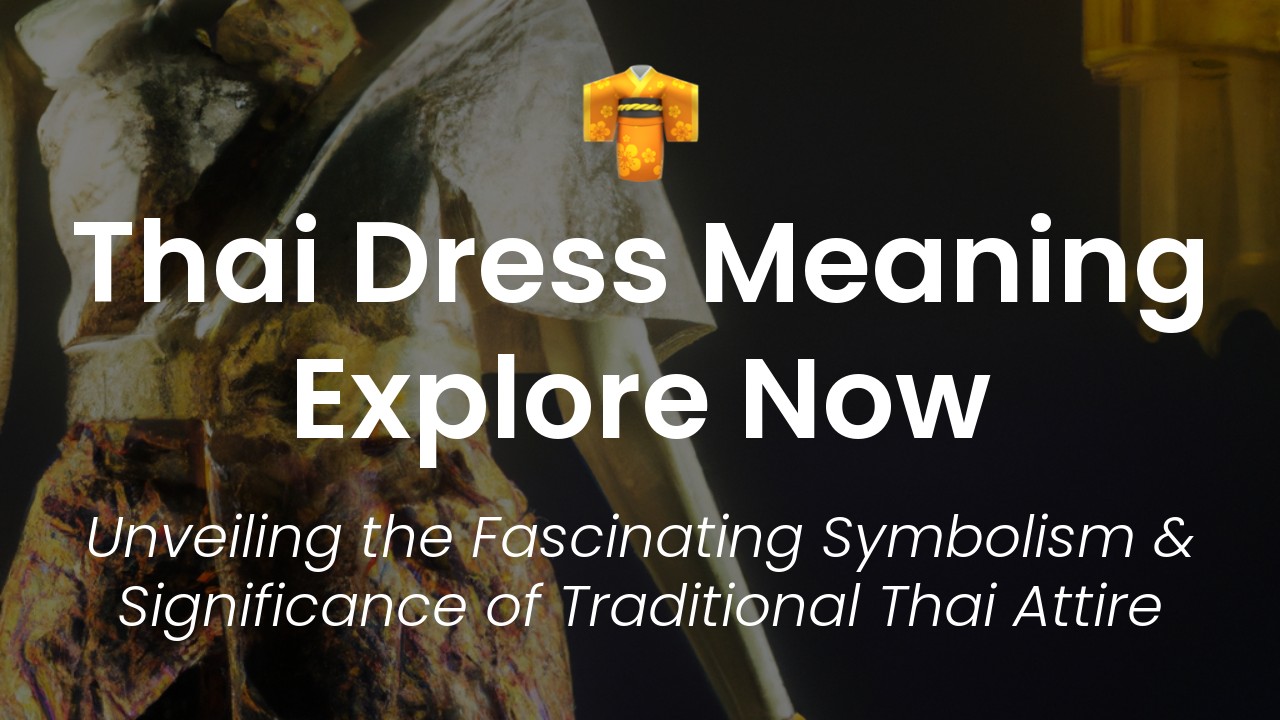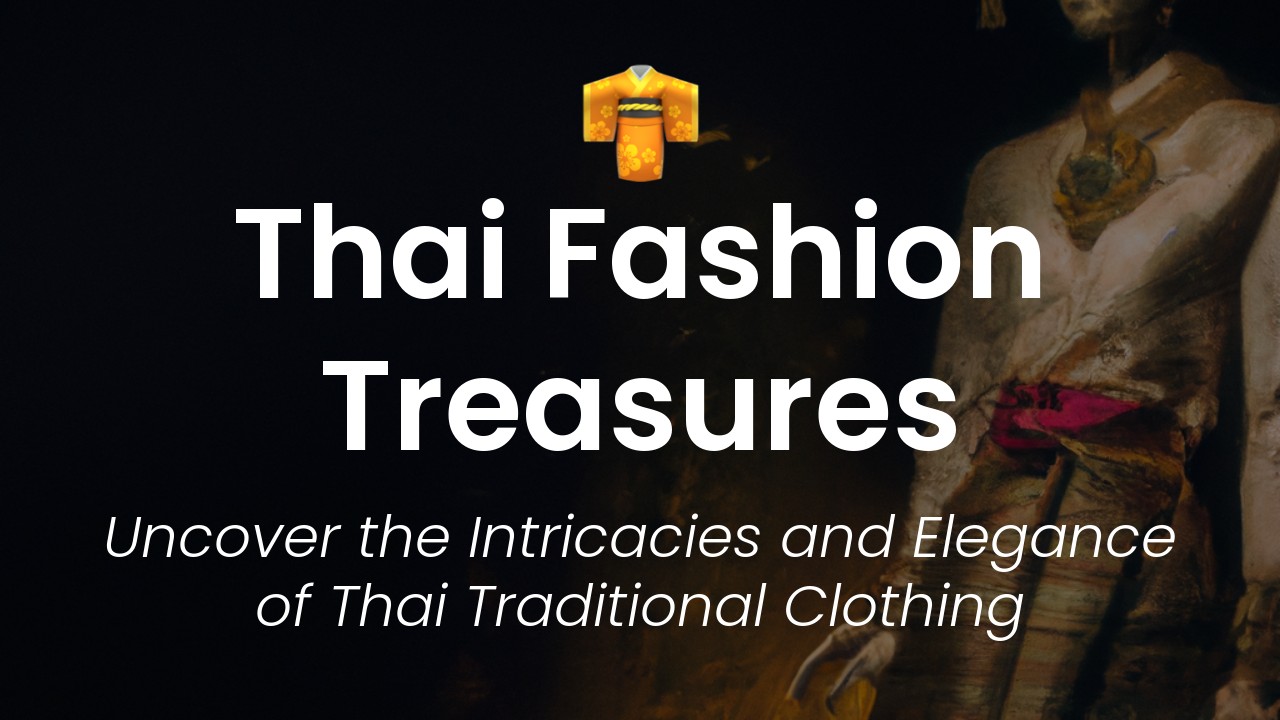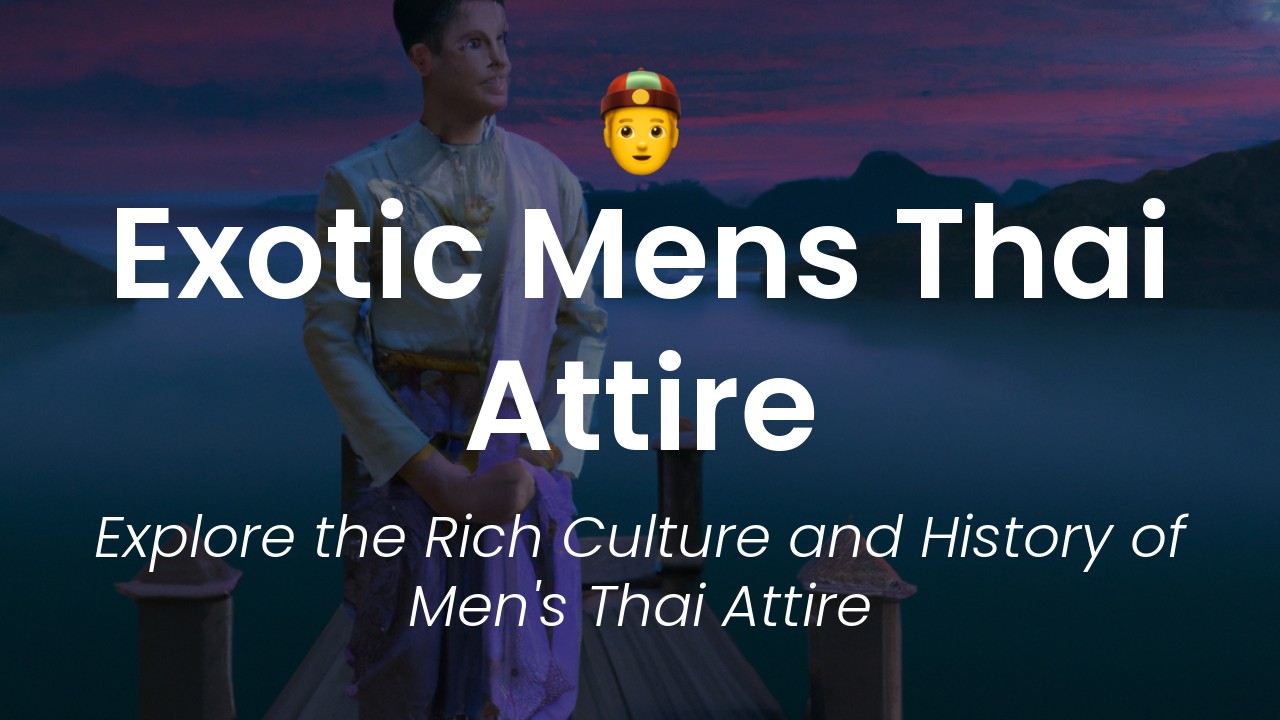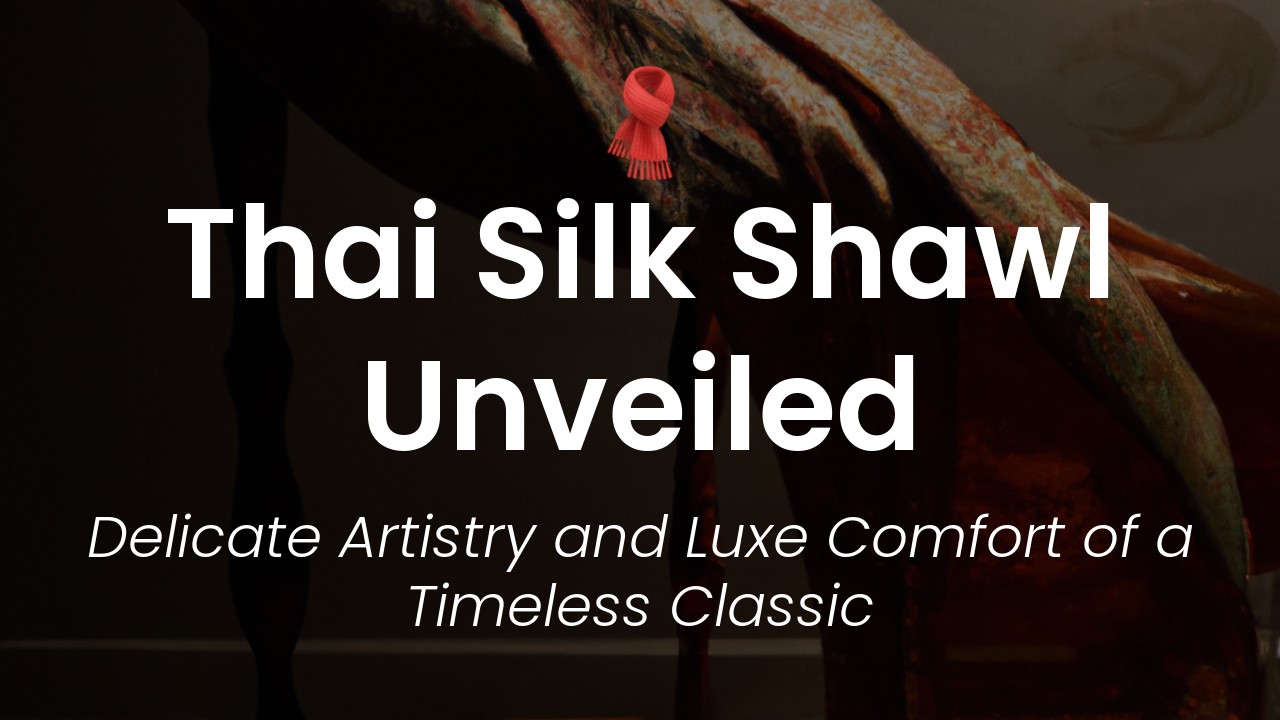Welcome to my latest blog post, where we're going to take a closer look at the exquisite beauty of traditional Thai dance costumes. As a young woman from Thailand, I have always been fascinated by the rich cultural heritage of my country, and the beauty and intricacy of Thai dance costumes is something that has captured my imagination since I was a small child. Now, as a writer and cultural commentator, I feel privileged to be able to share my knowledge and passion with a wider audience.
For those of you who may not be familiar with Thai dance, it is a form of performance art that combines elements of traditional Thai music, drama, and dance. With a history that can be traced back centuries, Thai dance is a deeply spiritual and symbolic art form that is still practiced today in a variety of contexts, from religious ceremonies to cultural festivals and tourist attractions. While each style of Thai dance has its own unique characteristics and costumes, there are certain elements that are common to many styles.
One of the most striking aspects of Thai dance costumes is their elaborate and ornate design. Made from fine silk and other luxurious materials, these costumes feature intricate embroidery, beading, and embellishments, often in bright colors and bold patterns. The elaborate headdresses and other accessories are an essential part of the overall ensemble, adding to the drama and beauty of the performance. These costumes are carefully crafted by skilled artisans and take weeks or even months to complete, making them true works of art in their own right. So, let's dive deeper into the world of Thai dance costumes and explore their breathtaking beauty!
The Meaning of Thai Dance
When people think of Thailand, they likely imagine vibrant street food, incredible beaches, and ancient temples. However, Thailand is also well-known for its rich and unique culture, particularly when it comes to music and dance. Thai dance, in particular, is renowned for its intricate and graceful movements, which are accompanied by beautiful music and stunning costumes.
In Thai culture, dance has always played a significant role in both religious and social contexts. Traditional Thai dance, known as 'Ram Thai,' often recurs in temple festivals and special events, becoming an integral part of Thailand's religious traditions, with the dancers being seen as spiritual guides or channels of higher energy.
However, Thai dance is not just performed for religious reasons; it is also often used for social gatherings and special occasions such as weddings, parties, and graduations. Whatever the context, Thai dance is always seen as a beautiful expression of Thailand's cultural heritage, and one that is deeply cherished by its people.
Historical Evolution of Thai Dance Costumes
The costumes worn by Thai dancers have an equally rich and fascinating history. Traditional Thai dance costumes generally involve intricate and brightly-colored designs, with specific colors and patterns depending on the type of dance being performed.
These costumes have evolved throughout Thailand's history, with various cultural influences shaping their design over the centuries. For example, the khon dance, which depicts ancient Thai legends, features ornate costumes inspired by the fashion of Ayutthaya, a former Thai kingdom.
During the reign of King Rama V, Western fashion began to influence Thai dress, leading to new designs and styles of traditional Thai dance costumes. Women's costumes, in particular, became more elaborate, with luxurious fabrics such as silk and gold thread frequently used to create breathtakingly intricate patterns.
Main Elements of Thai Dance Costumes
Thai dance costumes typically consist of several key elements that are unique to each dance type. One of the most recognizable elements is the headdress or 'chada,' which is typically made of gold threads and features intricate designs and patterns.
Another key element is the 'sabai,' a long scarf worn around the neckline and draped elegantly over the shoulders. This garment is often used to accentuate the dancer's movements and enhance the costume's overall grace.
The 'phaa sin,' or waistcloth, is also an essential part of Thai dance costumes. This long piece of fabric is wrapped around the hips and secured with a belt, forming a flowing skirt that accentuates the dancer's movements.
Accessories such as bracelets, anklets, and intricate earrings are also often worn to complete the costume's look, with the color and design choices specific to the type of dance being performed.
Traditional Thai Dance Costume for Men and Women
Traditional Thai dance costumes differ slightly between men and women, with men's costumes typically featuring more subdued colors and simpler designs.
Men's costumes often include a tunic, 'sabai,' and waistcloth, while women's costumes typically include an additional 'praeng' or fitted blouse, as well as ornate headdresses and jewelry.
While the costumes themselves differ between genders, both male and female dancers are celebrated for their grace and expressiveness in Thai dance, with their costumes playing an essential role in conveying the beauty and elegance of each move.
Popular Thai Dance Costume Materials
As mentioned previously, Thai dance costumes often incorporate luxurious fabrics such as silk, satin, and gold thread. High-quality silk, in particular, is widely used in traditional Thai costumes due to its softness, durability, and vibrant colors.
Other popular materials include cotton, brocade, and velvet, depending on the type of dance being performed. Intricate patterns and designs are often achieved through a combination of weaving techniques and embroidery, resulting in breathtakingly beautiful and unique costumes.
Festivals to Spot Thai Dance Costumes
If you're interested in seeing Thai dance costumes in person, there are many events and festivals throughout Thailand that celebrate this art form. One such festival is the annual 'Loy Krathong,' which takes place on the full moon of the twelfth lunar month (usually in November).
During this festival, people release decorative floats made from flowers and paper onto rivers and canals, creating a magical and serene atmosphere. In addition to these floats, you can also spot local dancers clad in their vibrant costumes as they perform traditional dances on stage.
Other events that showcase traditional Thai dance costumes include the 'Songkran' festival, which marks the Thai New Year and involves water fights, music, and dance; the 'Khon' festival, which features the storytelling dance tradition of the same name; and the annual 'Royal Ploughing Ceremony,' where dancers perform ancient rituals to mark the beginning of the rice-growing season.
Modern Interpretations of Thai Dance Costumes
While traditional Thai dance costumes remain a popular and impressive sight, contemporary interpretations of these costumes are also beginning to emerge. These interpretations often focus on reimagining traditional patterns and materials in new and exciting ways.
Modern designs often incorporate new materials, such as sequins or metallic fabrics, and creative color choices such as bright neon hues. These innovative designs fuse ancient traditions with new fashion concepts, bringing Thai dance costumes into the modern era.
So if you're looking for a truly unique and breathtaking experience, consider attending a Thai dance performance to see these costumes in all their beauty. Whether watching traditional or contemporary interpretations, Thai dance costumes are a beautiful expression of Thailand's rich cultural legacy that is sure to leave a lasting impression on anyone who sees them.

